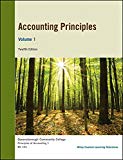
(a)
Trend Analysis: Trend analysis is an extended feature of horizontal analysis that enables the user to get the trend for a particular account during a relatively longer time period. It makes the base year’s amount as 100 and then calculates the percentage for the amount of following years.
Profit Margin: Profit margin ratio reflects the portion of net income in the net sales. It is a profitability measure tool that is used to evaluate the net income a business earns on every dollar of net sales. It is computed as net income divided by net revenue.
Asset Turnover: It is the extended form of
Return on Assets: It is a measure of net income earned on the basis of total assets used in the business. A company’s rate of return on assets shows the amount earned as the percentage of average total assets.
Return on Common
Debt to Assets Ratio: It is the ratio between total assets of the company and the total liabilities. Debt ratio reflects the finance strategy of the company. It is used to evaluate company’s ability to pay its debts. Higher debt ratio implies the higher financial risk.
Times Interest Earned: It reflects company’s earnings as the times of its interest expenses. It is used to evaluate the ability to pay interest expense, a company has. Higher ratio is preferred as it enables to pay the obligation of interest.
To prepare: The trend analysis of (1) net sales and (2) net income for Company A.
(b)
To evaluate: The profitability of Company A for 2012 and 2013 based on the (1) profit margin, (2) asset turnover, (3) return on assets and (4) return on common stockholders’ equity.
(c)
To evaluate: Company A’s solvency for 2012 and 2013 based on the (1) debt to assets ratio and (2) times interest earned.
(d)
To identify: The useful information outside annual report to evaluate a company for investment.
Trending nowThis is a popular solution!

Chapter 18 Solutions
Accounting Principles 12th Edition
- On the 5th of the month, Greg Marketing pays its field sales personnel a 3% commission on the previous month's sales. Sales for March 2016 were $1,200,000. What is the entry at the end of March to record the commissions? A. Debit Sales - 36,000$; Credit Sales Commission Expense - 36,000$ B. Debit Sales Commission Expense - 36,000$; Credit Sales Commissions Payable - 36,000$ C. Debit Sales Commission Expense - 36,000$; Credit Accounts Receivable - 36,000$ D. Debit Sales -36,000$; Credit Sales Commission Income - 36,000$arrow_forwardNet profit is calculated in which of the following account? A) Profit and loss account B) Balance sheet C) Trial balance D) Trading accountarrow_forwardThe debts which are to be repaid within a short period (a year or less) are referred to as, A) Current Liabilities B) Fixed liabilities C) Contingent liabilities D) All the abovearrow_forward
- Solution this questionarrow_forwardQuestion 2 Long term assets without any physical existence but, possessing a value are called A) Intangible assets B) Fixed assets C) Current assets D) Investmentsarrow_forwardResources owned by a company (such as cash, accounts receivable, vehicles) are reported on the balance sheet and are referred to asarrow_forward

 AccountingAccountingISBN:9781337272094Author:WARREN, Carl S., Reeve, James M., Duchac, Jonathan E.Publisher:Cengage Learning,
AccountingAccountingISBN:9781337272094Author:WARREN, Carl S., Reeve, James M., Duchac, Jonathan E.Publisher:Cengage Learning, Accounting Information SystemsAccountingISBN:9781337619202Author:Hall, James A.Publisher:Cengage Learning,
Accounting Information SystemsAccountingISBN:9781337619202Author:Hall, James A.Publisher:Cengage Learning, Horngren's Cost Accounting: A Managerial Emphasis...AccountingISBN:9780134475585Author:Srikant M. Datar, Madhav V. RajanPublisher:PEARSON
Horngren's Cost Accounting: A Managerial Emphasis...AccountingISBN:9780134475585Author:Srikant M. Datar, Madhav V. RajanPublisher:PEARSON Intermediate AccountingAccountingISBN:9781259722660Author:J. David Spiceland, Mark W. Nelson, Wayne M ThomasPublisher:McGraw-Hill Education
Intermediate AccountingAccountingISBN:9781259722660Author:J. David Spiceland, Mark W. Nelson, Wayne M ThomasPublisher:McGraw-Hill Education Financial and Managerial AccountingAccountingISBN:9781259726705Author:John J Wild, Ken W. Shaw, Barbara Chiappetta Fundamental Accounting PrinciplesPublisher:McGraw-Hill Education
Financial and Managerial AccountingAccountingISBN:9781259726705Author:John J Wild, Ken W. Shaw, Barbara Chiappetta Fundamental Accounting PrinciplesPublisher:McGraw-Hill Education





